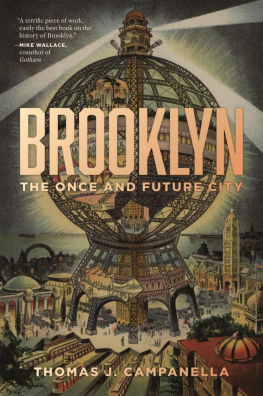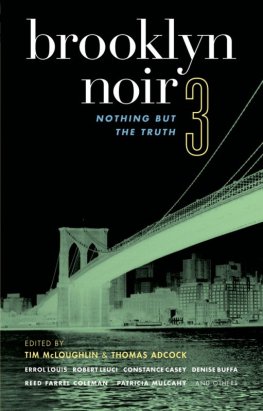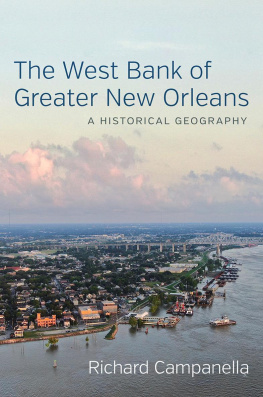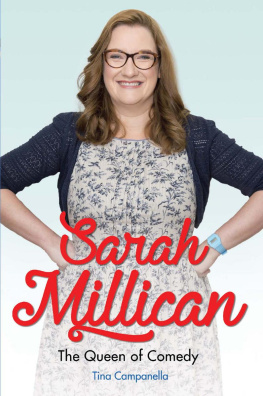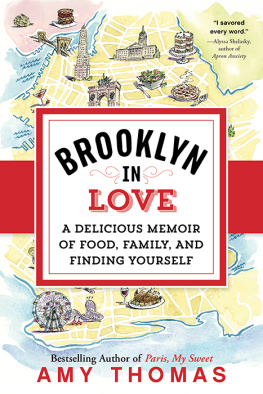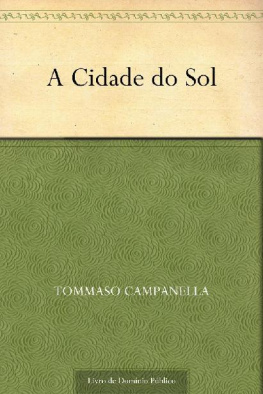Copyright 2019 by Thomas J. Campanella
Requests for permission to reproduce material from this work
should be sent to Permissions, Princeton University Press
Published by Princeton University Press
41 William Street, Princeton, New Jersey 08540
In the United Kingdom: Princeton University Press
6 Oxford Street, Woodstock, Oxfordshire OX20 1TR
press.princeton.edu
Jacket illustrations: (front) The Steel Globe Tower, 700 Feet High. Lithograph postcard, Samuel Langsdorf and Company, 1906. Collection of the author. (back) Map published in 1907 by August R. Ohman and Co., Library of Congress.
Map on pp. iiiii: published in 1907 by August R. Ohman and Co.; Library of Congress.
All Rights Reserved
ISBN 978-0-691-16538-7
Library of Congress Control Number: 2018966370
British Library Cataloging-in-Publication Data is available
This book has been composed in Adobe Text Pro, Abolition, and Gotham
Printed on acid-free paper.
Printed in the United States of America
10 9 8 7 6 5 4 3 2 1
ACKNOWLEDGMENTS
This book took nearly a decade to write; but it was a labor of love and a homecoming too. I began work on it as I found myself returning more frequently to my childhood Brooklyn home to care for my aging parents andafter taking a faculty position at Cornell in 2013threw myself into the research and writing full time. Like many of Brooklyns native sons and daughters, I went through a long period of disdain for the place, which had hit rock-bottom by the time I was a teenager. It wasnt until the late 1980s, as a graduate student in the College of Architecture, Art, and Planning at Cornell, that I awakened to the splendor and richness of Brooklyns urban landscape. This was largely due to the influence of a Brooklynite professor with a passion for history, Leonard J. Mirin, my mentor, friend, and now colleague. Lenny watered seeds of interest in New Yorks urban past planted years before by my mother and father, who took their boys on countless field trips across the cityto museums and historic sites, Prospect Park, Kennedy Airport, the Brooklyn Heights Promenade, Barren Island and Jamaica Bay, the United Nations, and the vast and humming construction site that was the World Trade Center.
My rediscovery of Brooklyn also tapped deep family roots. My great-grandfather Michael Onorato was the first to cross the East River, bundling his large family out of Little Italy after a cholera outbreak in 1902. He didnt stop until he reached the sea at Coney Island, about as far from Christie Street as you could get and still be in New York City. There he opened a barbershopMichaels Tonsorial Parloron Surf Avenue and long-vanished Oceanic Walk, where one of his customers was George C. Tilyou, fabled founder of Steeplechase Park. This assured that all the barbers children would get summer jobs right next door. My grandmother Mary and her sisters rented out bathing suits in the Steeplechase womens locker room. Aunt Millie went on to nursing school but returned to work alongside showman-physician Martin Couney at his boardwalk baby-incubator exhibit. Three of my great-uncles made Steeplechase their lifes work. Vito was the parks plumber, Rocco managed the books, and Jimmy became general manager in 1928a position he would hold for almost forty years. A voluble man with an omnipresent Palumbo cigar clamped between his teeth, Jimmy of Steeplechase became an institution himself on Coney Island. During the Depression he was a one-man WPA, hiring as many out-of-work men as he could affordincluding my grandfather. He once hosted an inquisitive Californian who spent a week studying every aspect of the parks spotless, family-oriented operation. That man was Walt Disney, who later tried to recruit Uncle Jimmy to run Disneyland. It turned out that Jimmy of Steeplechase meant just that: he would not abandon his beloved park, nor Coney Island, nor Brooklyn.
Uncle Jimmy lived across the street from my grandmother in Borough Park, a few blocks away from his mother and a stones throw from most of his other siblings. Such snug familial and neighborhood bonds were typical for middle-class New Yorkers of Jimmys generation. But things unraveled fast after World War II, as their children discovered the automobile and Levittown and life in the suburbs. Many departed the region and state altogetherfor New Jersey, Connecticut, Virginia, Washington, California. My parents left their old neighborhoods too, but they didnt go far: my father had a shop to keepJ-C Electric Motors on Sixty-Fifth Streetand was teaching in the public school system. For them, moving up meant moving down the map a smidgeto leafy, tranquil Marine Park, that enigmatic corner of deep-south Brooklyn where, as we will see, European colonists first settled on Long Island. My very first debt of gratitude for this book, then, is owed my much-missed parents, who stuck by Brooklyn as everyone else fled, who not only gave me life itself but launched not one but two sons into careers of urban-architectural discovery and wonder. Thank you, Mario and Rose, for never abandoning Brooklyn, so that I could return to make it home again, to discover it afresh, to write this book.
Many others helped make this book happen. First among them is Bob Balder, one of my oldest compatriots and a Cornell colleague who has inspired scores of architecture and planning students as director of our New York City studio. A wellspring of knowledge about Brooklyn and New York alike, Bob has been my interlocutor for countless hours in conversations about the citys architecture, infrastructure, and urbanism. A finer, more loyal friend does not exist. Equally deserving of gratitude is my cousin Michael P. Onorato, a historian himself whoas Jimmys sonpractically grew up at Steeplechase. Michael has published a wealth of primary-source material on Steeplechase over the years, including his fathers voluminous daybooks, and patiently answered dozens of questions I had about Coney Island, the Tilyou family, and the Pavilion of Fun that was so tragically destroyed (by Donald Trumps father, as we will see). My good friends and Marine Park neighbors Alyssa Loorya, Malka Simon, and Jane Cowanfounding members of the League of Flatlandersdeserve thanks for their fellowship and kindred passion for Brooklyns built environment. Alyssa and her husband, Chris Ricciardi, are among the citys most experienced archaeologists, and both contributed greatly to the early chapters of the book.
I hardly know where to begin thanking all my many friends and colleagues who, in one way or another, enriched this book and helped move it toward completion. I owe a great debt of gratitude to my Job-patient editor at Princeton University Press, Michelle Komie, who helped shepherd this work from vague notion to finished book. My late friend and fellow urbanist Hilary Ballon was the first to read an early draft of this book, and I only wish I could have completed the book in time for her to see it. Adele Chatfield Taylor has long taken a keen interest in my work, both here and at the American Academy in Rome, where I researched the deep roots of Moses-era city park design. Jonathan Kuhn of the New York Parks Department, a living library of knowledge about Gothams parklands, has been a wonderful friend and colleague. Charlie Denson of the Coney Island History Project took a keen and early interest in my work. My urbanist-historian brother Richard, that veritable Virgil of New Orleans, has been a steady source of advice and expertise.



